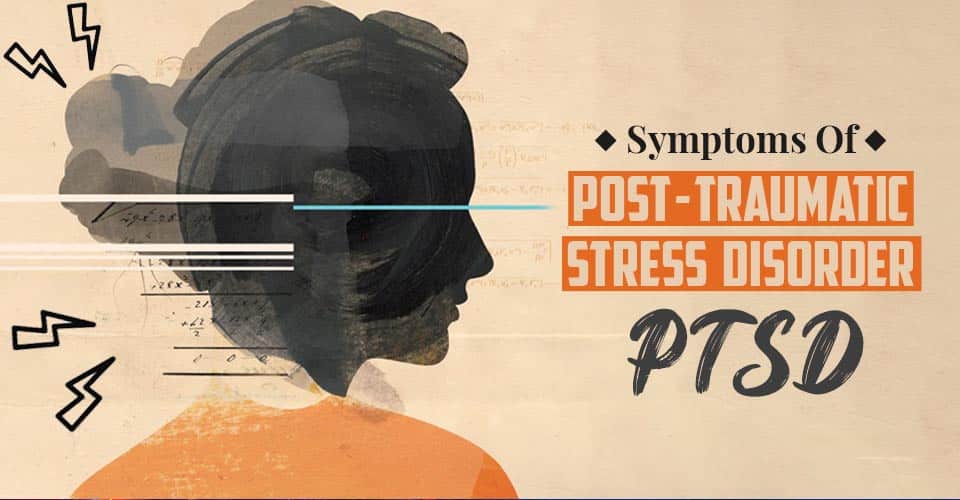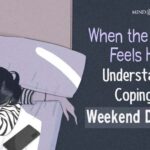Post-traumatic stress disorder (PTSD) can affect anyone who has survived or witnessed a traumatizing experience. However, identifying the symptoms of post-traumatic stress disorder can be challenging as it is often confused with anxiety or depression.
Table of Contents
Signs And Symptoms Of PTSD
Post-traumatic stress disorder, commonly known as PTSD, is a serious psychiatric disorder 1 Bisson, J. I., Cosgrove, S., Lewis, C., & Robert, N. P. (2015). Post-traumatic stress disorder. BMJ (Clinical research ed.), 351, h6161. https://doi.org/10.1136/bmj.h6161 that occurs after having experienced, witnessed, or been exposed to the details of a traumatic event.
Know More About Post-traumatic Stress Disorder Here
Read Here About The Causes Of Post-traumatic Stress Disorder
Similar to most mental disorders, the symptoms of post-traumatic stress disorder exist on a spectrum. For some individuals, PTSD symptoms can manifest immediately after the occurrence of the traumatic event while for others they may appear months or even years after the event. Understanding the symptoms of post-traumatic stress disorder can help us better identify them and seek appropriate help.
The symptoms of PTSD 2 Center for Substance Abuse Treatment (US). (2014). Exhibit 1.3-4, DSM-5 Diagnostic Criteria for PTSD. Nih.gov; Substance Abuse and Mental Health Services Administration (US). https://www.ncbi.nlm.nih.gov/books/NBK207191/box/part1_ch3.box16/ can be divided into four categories.
1. Intrusive Symptoms
A person with PTSD may often relive the traumatic event in different ways. This can be done through:
a. Recurrent memories
Repetitive memories of the trauma may disturb the affected person, causing hindrance in their daily activities. People usually do not have any control over these memories. In the case of children, they can manifest as repetitive play expressing the themes of the traumatic event.
b. Distressing dreams
Dreams related to the traumatic event are also common in PTSD. For children, these may include abstract nightmares that they may not be able to make sense of.
c. Flashbacks
Another one of the common signs of PTSD is dissociating and feeling as if the traumatic event is occurring again. At times, this might even result in a complete loss of awareness of one’s surroundings.
Moreover, being exposed to any object, situation, or person that is a reminder of the trauma can cause extreme psychological distress and physical symptoms of discomfort.
2. Avoidance
There is also a tendency in PTSD-affected people to avoid things associated with the traumatic event. This could be objects of daily use, certain specific areas or routes, some people related to the event, etc.
The avoidance can also be internal in the form of attempts to suppress their own memories and feelings associated with the event.
3. Negative changes in thoughts & mood
Apart from intrusive thoughts and efforts at avoidance, symptoms of post-traumatic disorder also include changes in cognition and mood. These can manifest in the following ways.
a. Memory problems
People with PTSD can experience difficulty remembering certain specific parts of the traumatic event. This is also known as ‘dissociative amnesia.’
b. Exaggerated beliefs
Certain negative beliefs about oneself, others, and the world can also be characteristic of people suffering from PTSD. Some examples of such beliefs are, “I am a horrible person”, “Nobody can be trusted”, etc.
c. Distorted cognitions about the event
A person may also have false theories regarding why the event happened and whatever occurred as a result of it. This can lead them to blame themselves or someone else for something that may not have been in their control.
d. Negative affect
PTSD can alter a person’s mood and emotions in the long term, making them constantly afraid, angry, ashamed, or guilty. It can also prevent them from experiencing positive emotions such as happiness and satisfaction.
Other than this, people with PTSD may also feel detached from others and lose interest in most activities.
4. Changes in arousal and reactivity
Behavior and reactivity-related symptoms of post-traumatic stress disorder can manifest in the following ways.
a. Anger outbursts and irritability
This can include sudden verbal or physical aggression without being provoked along with generally irritable behavior.
b. Self-destructive behavior
One may indulge in reckless behavior such as excessive spending, gambling, unprotected sex, substance abuse, and other such things in the aftermath of a trauma.
c. Hypervigilance
Chronic hypervigilance is one of the common symptoms of post-traumatic stress disorder. It involves being in a constant state of high alertness and on the lookout for potential dangers.
d. Exaggerated startle response
A person suffering from PTSD might get startled or scared when someone unexpectedly comes into the room or even if a known person touches them.
Other symptoms can include difficulty concentrating in day-to-day activities and falling or remaining asleep.
Gender Differences In PTSD
Are the symptoms of post-traumatic stress disorder different for men and women?
Although the primary signs are similar, there may be differences with respect to the manner and frequency with which the symptoms of post-traumatic stress disorder present themselves based on gender.
According to existing data, women are at a higher risk 3 Olff, M., Langeland, W., Draijer, N., & Gersons, B. P. (2007). Gender differences in posttraumatic stress disorder. Psychological bulletin, 133(2), 183–204. https://doi.org/10.1037/0033-2909.133.2.183 of PTSD than men, which could be due to the kind of trauma women are likely exposed to and the age of exposure along with other factors such as threat perception and social support.
PTSD symptoms in women 4 Pineles, S. L., Arditte Hall, K. A., & Rasmusson, A. M. (2017). Gender and PTSD: different pathways to a similar phenotype. Current opinion in psychology, 14, 44–48. https://doi.org/10.1016/j.copsyc.2016.11.002 may involve more sensitivity to negative emotions. On the other hand, men are more likely to show impulsivity and substance abuse.
With respect to cognitions, women are more likely to have distorted beliefs and negative views about themselves whereas PTSD symptoms in men involve relatively lesser rumination and negative thinking.
Takeaway
Symptoms of post-traumatic stress disorder can manifest in different ways and prove to be extremely debilitating, acting as obstacles in daily life. It is important to identify these symptoms and seek professional help as soon as possible to prevent them from aggravating further.
At A Glance
- The symptoms of post-traumatic stress disorder can be divided into four categories- intrusion, avoidance, negative mood and cognition, and changes in arousal and reactivity.
- Intrusive symptoms include recurring memories, nightmares, and flashbacks.
- Avoidance symptoms are related to avoiding situations, objects, and people related to the trauma.
- Negative changes in mood and cognition include memory problems, distorted cognitions, and negative beliefs about oneself and the world.
- Hypervigilance, anger outbursts, and exaggerated startle response are some of the symptoms of post-traumatic stress disorder related to changes in arousal and reactivity.















